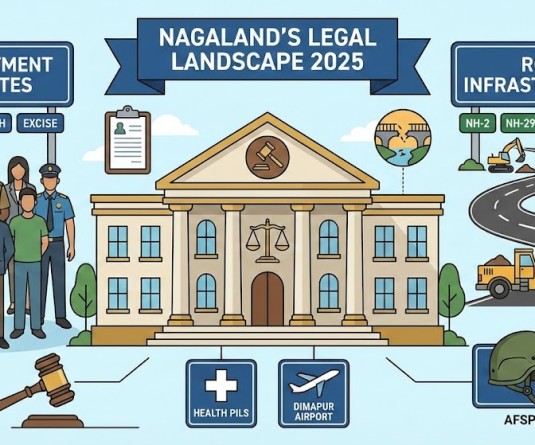
Dimapur, February 21 (MExN): According to the Nagaland Water Policy (2016) under Department of Soil and Water Conservation, Government of Nagaland, submitted by Indian Environment Law Offices the present scenario of water resources and their fragmented management through a variety of institutions at the state level with overlapping mandates has given rise to several water related concerns and challenges that need immediate attention.
Some of the most significant concerns and challenges are as follows:
• Villages in Nagaland are located at the hilltops and their population has been increasing since their establishment. Once sufficient, the existing locally available water resources are unable to meet existing water demand in the villages for drinking and sanitation purposes. Additional sources of water supply in the villages therefore need to be augmented.
• The existing system of community water storage structure in the villages aimed at meeting domestic water requirements of the inhabitants need improvement for ensuring water quality, whereas quantity of water needs to be seen in the context of increasing potable water use in the villages.
• After the formation of state of Nagaland, water resource development has not received required attention and priority resulting in fragmented institutional framework and skewed water governance.
• Due to a wide temporal and spatial variation in availability of water, likely to exacerbate due to a number of variable factors including climate change impacts resulting in incidences of water related disasters such as loss of soil fertility, flash floods and river meandering, the water crisis in the state is likely to deepen.
• Access to water for drinking and other domestic needs is an emerging challenge in many urban areas, towns and villages in the state. The potential for inter-village water transfer with the payment for ecosystem services mechanism needs exploration.
• The scenario of groundwater in Nagaland is rather oblique. Groundwater being part of hydrological cycle is sufficiently not addressed in the water resource planning in the state whereas instances of groundwater exploitation are increasing with an alarming rate.
• Development of water resources through multi-disciplinary approach involving all stakeholders through their local customary institutions for optimum utilization of available water resources, ensuring integrity of ecosystems and leading to the development of progressive regime on ecosystem services has not received adequate policy consideration in the past. The development of water resources projects in Nagaland needs to be done within the framework of community participation by involving village level institutions.
• Development of irrigation infrastructure is critical to ensuring food sustainability in the state.
• Natural water bodies, streams and springs that form core of natural water infrastructure in the state are being increasingly polluted. Springs that are the main source of drinking water supply are however protected by traditional institutional regime at the village level, which needs to be further strengthened with scientific inputs.
• However, communities value water as per customs and sanctions, consciousness pertaining to existing water stress that is likely to result in water scarcity needs to be created at the Village Council level.
• Scientific capacity building of institutions for the integrated water resource management in the state needs to be undertaken on an urgent basis.
• Spring and stream mapping and characteristic of catchment areas, recharge zones and flood plains needs to be better understood towards planning for any likely change caused due to climatic variations and incidents of natural disasters.




